It’s Been a While
Over two months, to be precise. Two months since the last edition of Electric Touring, and I will admit that it’s partly because, after the horrid journey from Scotland to Dover before Christmas, I was on a serious downer about the whole EV thing.
However, the daffodils are now pushing up through the snow and we’re away again with the caravan. I’m delighted to say that the utter joy and serenity of towing with an EV has completely reinvigorated my mojo.
Queue, Queue, Barley McGrew…
I was on a downer because of the grim reality of public charging during the winter. The rate of charge at Rapid and Ultra-Rapid Chargers drops considerably when the temperature plummets, and the queue of EVs waiting to charge correspondingly gets longer and longer.
I find the queuing process very stressful. First of all you need to ascertain who else is queuing, then await your turn and get all angsty when other EVs arrive after you, lest they dare jump the queue! In the meantime you can do nothing other than just sit in your car watching the other cars charge.
It’s not just the falling temperatures that causes queues at chargers, it’s also selfish behaviour from those EV drivers who don’t give a hoot about anyone else once they themselves are plugged in.
A Simple Solution to the Nightmare of Queuing
Electric Touring Reader Andrew Kinnear came up with a brilliant suggestion that I have promptly stolen and embellished upon, and that is a queuing system through the charging network’s app.
There could be a geofence about 50 metres around the chargers. Once you arrive inside, you press the Queue button on the app.
The app tells you how many are queuing before you, and what the estimated wait time is. The app also alerts you when your charger is ready.
If you don’t hook up to the charger within 5 minutes, you’ve lost your place in the queue and have to start again.
If there are more than two cars queuing, the system imposes an 80% limit on Rapid and Ultra-Rapid charging. And once charging is complete, you get a five minute grace period then a £1 fine for every minute of overstay.
In this day and age, it can’t be difficult to implement this. It’s nigh on impossible to run an EV without a smart phone, and how much more civilised, relaxing, and less stressful would the whole charging experience be? Let me know what you think in the comments.
Charging on Campsites
Given the vagaries of public charging, charging your car on a campsite is always a preferable option. How do you go about it?
First of all, every campsite has its own policy. Some allow you to charge your car, some don’t. Some charge a fee for charging, some don’t. Some even have dedicated car chargers… and some don’t.
It is not (normally) permitted to plug directly into the Commando Socket on the EHU bollard - you are to plug your car into a 13 amp socket in the caravan. That’s all well and good, but what about the small but growing number of camper vans that only have a Type 2 connector?
In all cases, it’s best to clarify the policy with the campsite when booking or when checking in.
Plugging in to the Caravan
When using a 13 amp socket to charge the car, you are normally limited to a draw of 10 amps, which equates to about 2.1kW. This means that on an overnight stop from 6pm to 9am, you’ll be able to replenish about 30kWh of your battery, which is about 50% for the most popular tow vehicles. While a useful boost, it would take a two night stay or wasting your evening driving to a public charger if you want to leave with a full battery in the morning. Remember, too, that if the EHU is 16 amps, you’ll only have 6 amps left to power everything in the caravan.
The need for 7kW chargers at campsites, especially those favoured by overnighters, is obvious.
Good news is that the Caravan and Motorhome Club has installed 7kW and 22kW chargers at some of its sites. You don’t need a special app or anything, you just ‘tap and go’ according to a Club Spokesperson. I’ve not yet tried one but look forward to doing so soon.
Bad news is that you cannot book them, so if you’re staying one night and the chargers are occupied, you’re back to square one. The Club argues that there is insufficient demand at the moment to warrant booking a charger. Having stayed at Clumber Park in 2022 on a night when there were two other EVs on site, I would beg to differ. In both cases, Mum had brought the caravan and the kids in the afternoon with the diesel towcar, and Dad had joined them straight from work that evening in the EV.
Club Policies
The Camping and Caravanning Club does not currently charge to plug your car into your caravan, but you do need to check first with the Holiday Site Manager who may not allow you to do so at times of peak demand.
The Caravan and Motorhome Club (CAMC) currently charges £9 per day or part thereof to plug your BEV or PHEV into your caravan. This can work out to be good value for BEV drivers, but less so for PHEV drivers who just want to top up a small battery.
The CAMC also offers dedicated EV chargers at the following sites:
Cayton Village (including a couple on service pitches that you can book)
Scarborough West Ayton
Clumber Park
Dornafield
Black Knowl
Coniston Park Coppice
Winchester Morn Hill
Lady Margaret’s Park
The popular and very select Love2Stay site in Shrewsbury also offers an EV charger.
If you know of any other sites that offer EV charging, please share them for everyone in the comments below. Thanks!
Jargon Buster
Commando Socket - The blue outdoor waterproof socket commonly used on caravan sites and other outdoor and commercial applications
EHU - Electric Hook Up on a campsite. In the UK, this is normally a Commando Socket
BEV - Battery Electric Vehicle, often referred to just as an EV
PHEV - Plug-in Hybrid Electric Vehicle
Type 2 Connector - the most common kind of AC connector on a BEV/PHEV
Do you want to find out more about Electric Tow Cars?
Check out Chris’s excellent website Electric Towcars which is kept up to date with the latest electric tow car information.
Did you find value in this edition of Electric Touring?
If so, please subscribe and join the growing community of people who tour with EVs, or are interested in doing so.
Sharing is caring
I’d be really grateful if you could share this Newsletter with your friends online, on your social media platforms and on relevant forums that you enjoy.
Feeling Flush?
Electric Touring is self-funded and therefore completely independent. There are no adverts to spoil your experience. If you’d like to support us, and you’re in a position to do so, please consider Buying Me a Coffee using this link:
https://www.buymeacoffee.com/andrewditton
THANK YOU for your support.
About the author
Andrew Ditton is an award-winning videographer and leisure vehicle journalist with over 20 years experience. His audience is one of the largest and most engaged in the sector (source - Semrush) and his YouTube channel has over 73,500 Subscribers (December 2022). A lifelong caravanner, he is now touring with a Kia EV6 towing a Kimberley Caravans Xplore Activ 304.




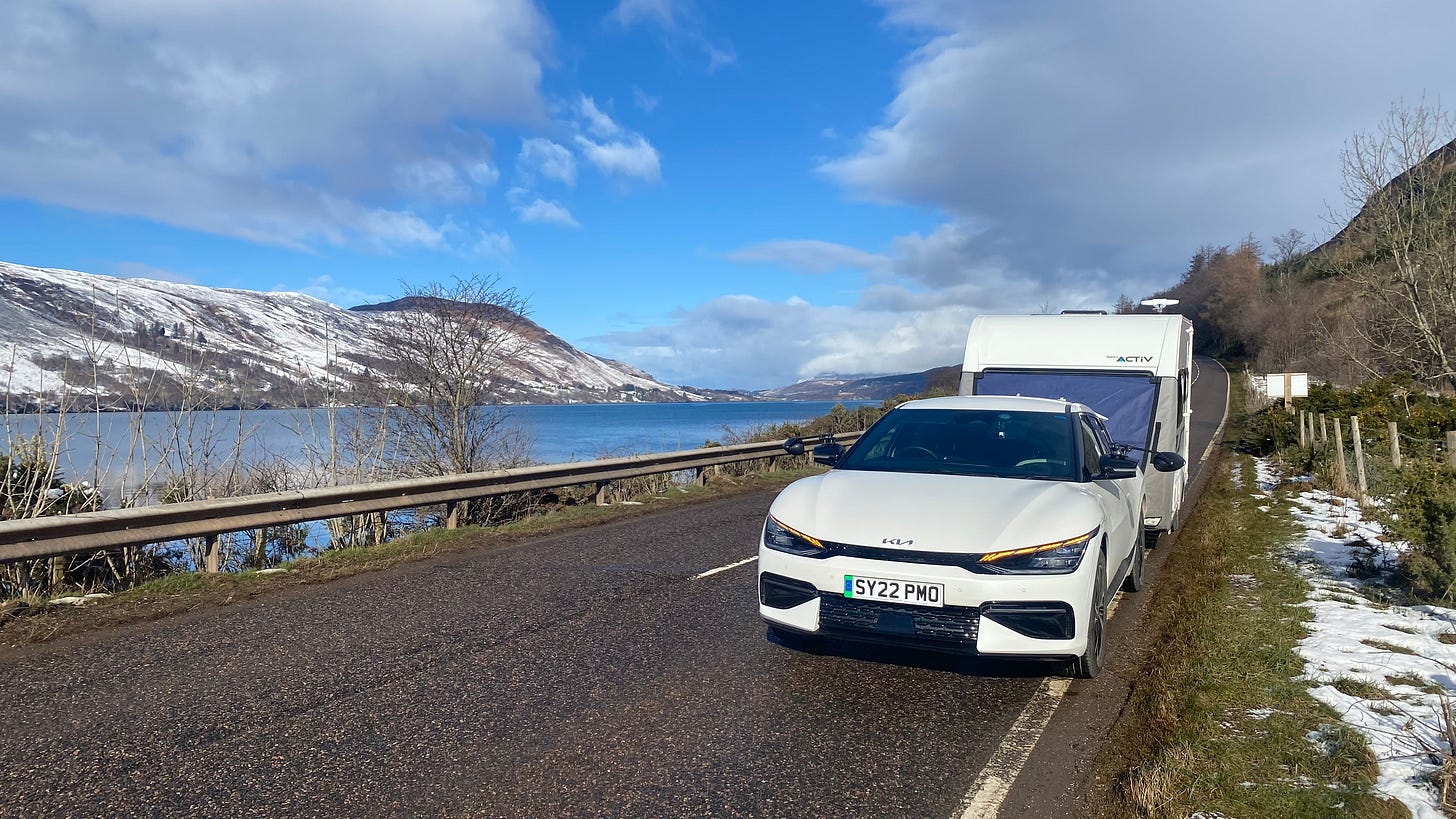
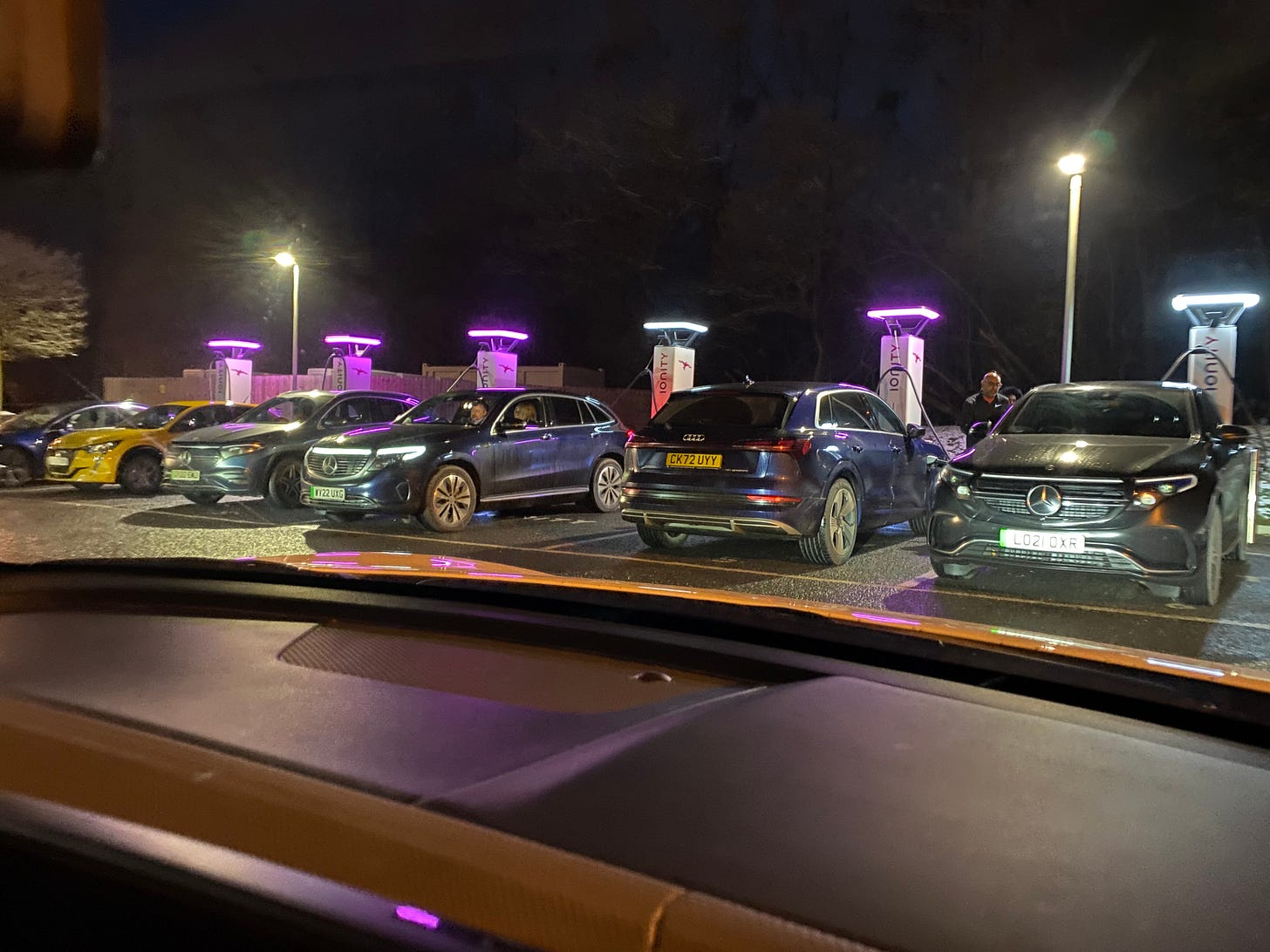
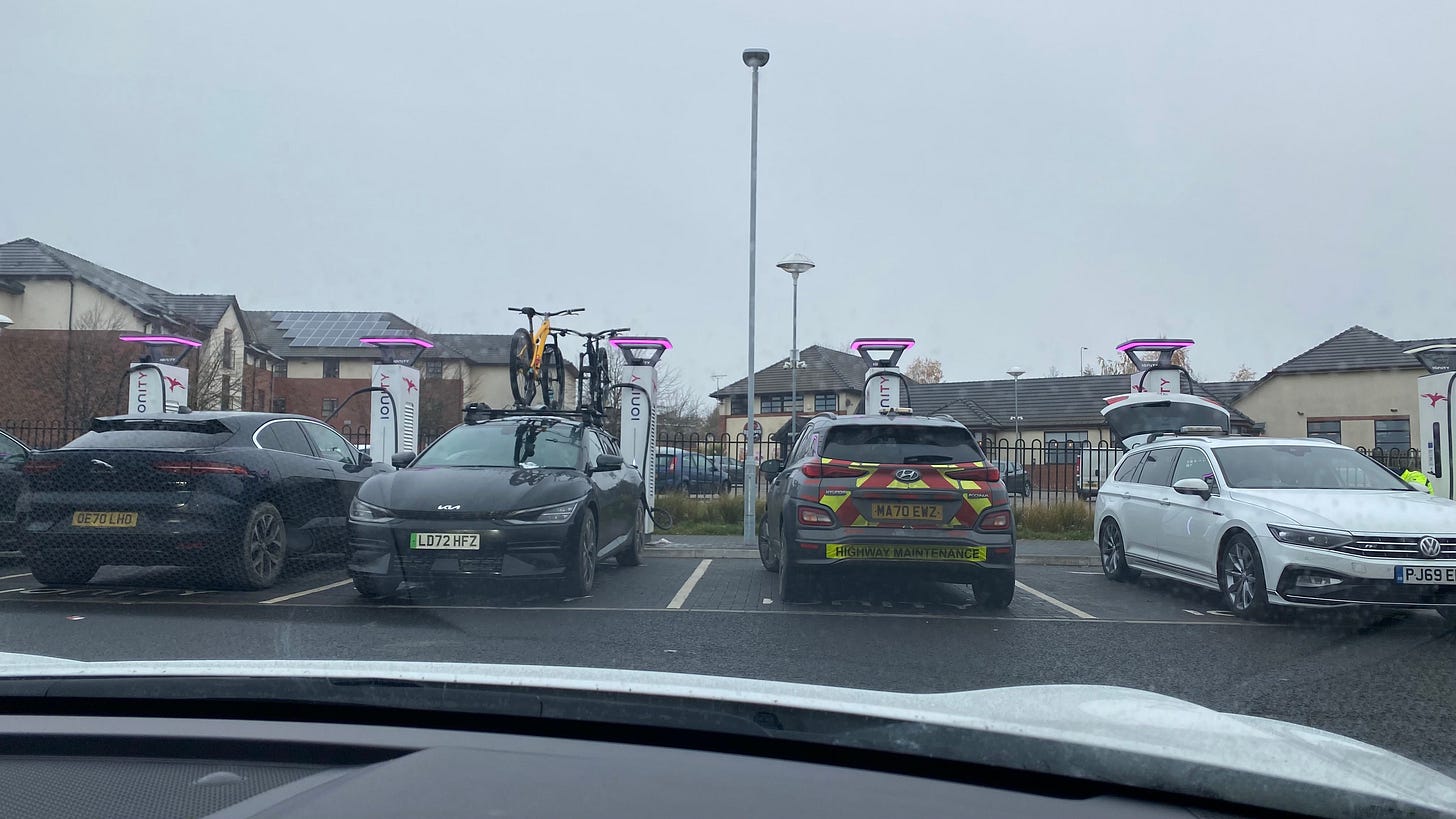
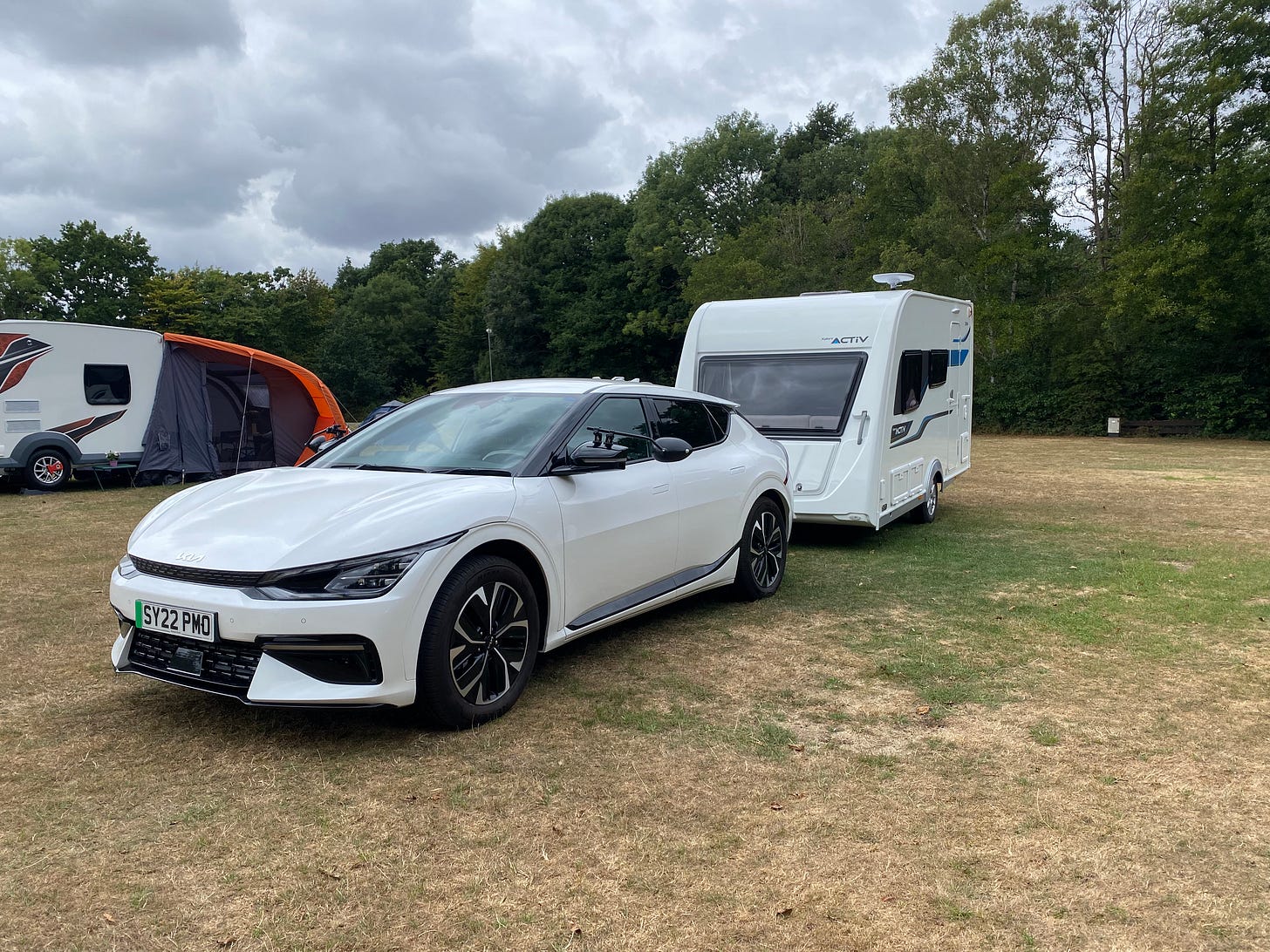
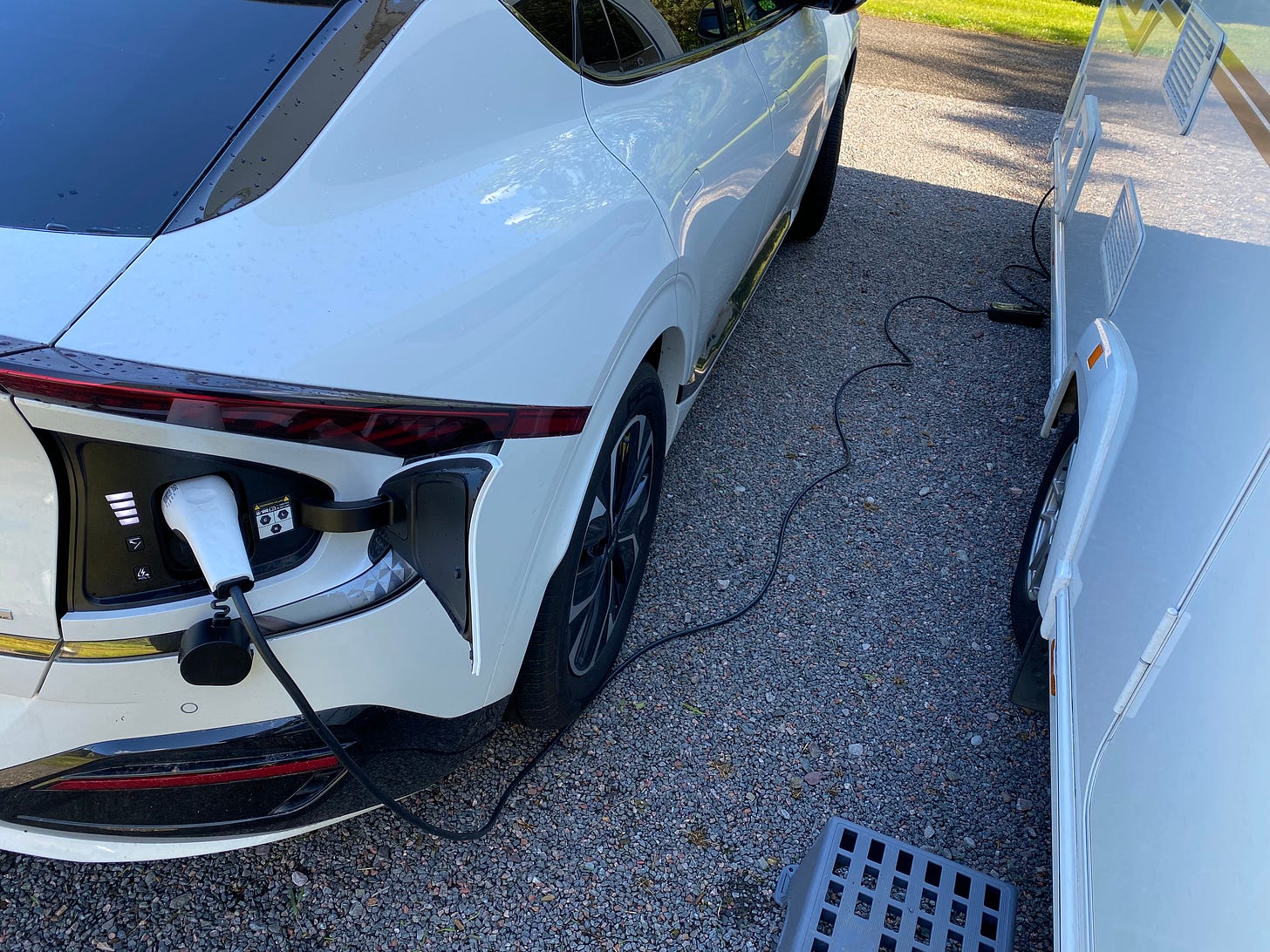
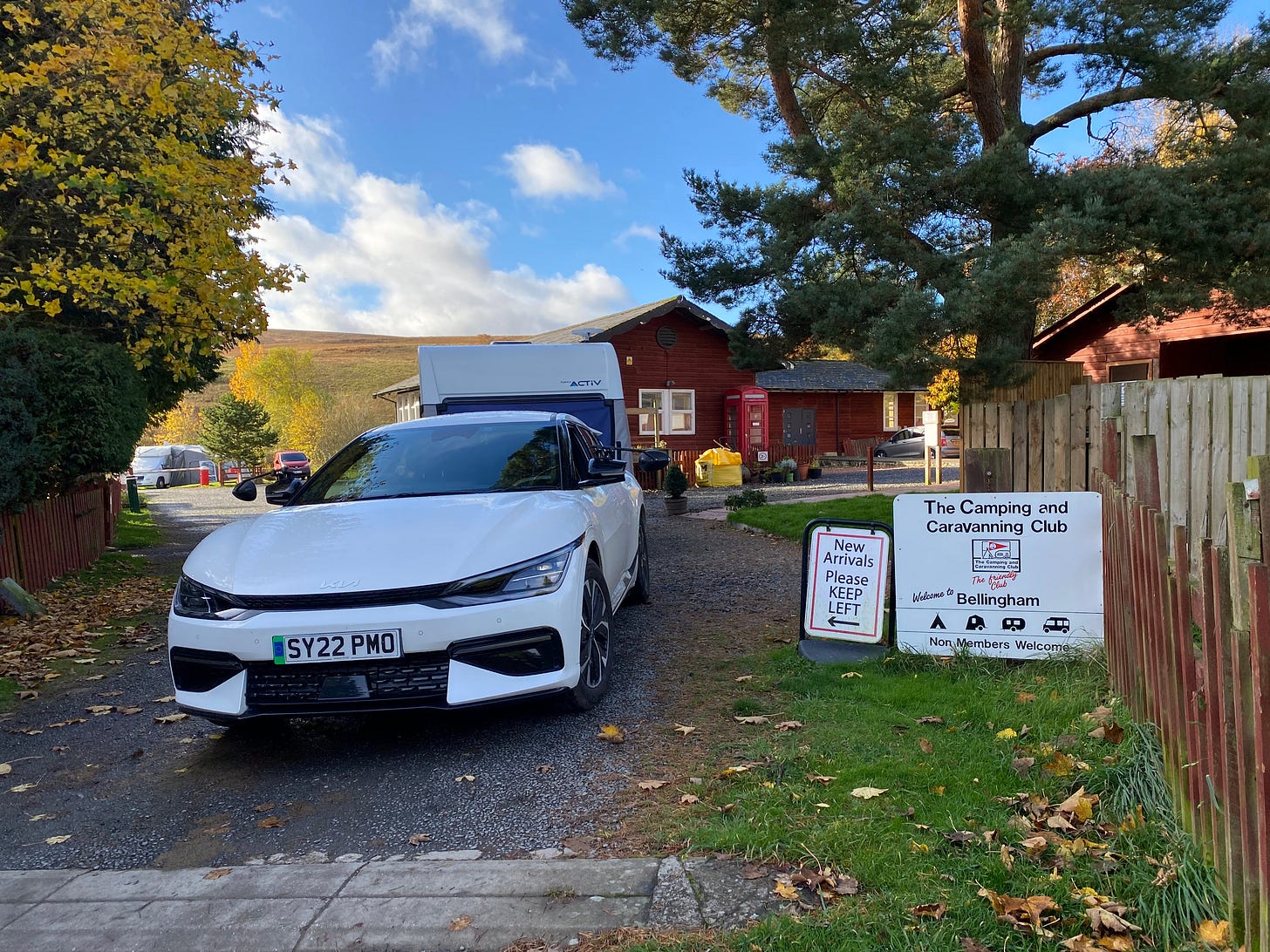
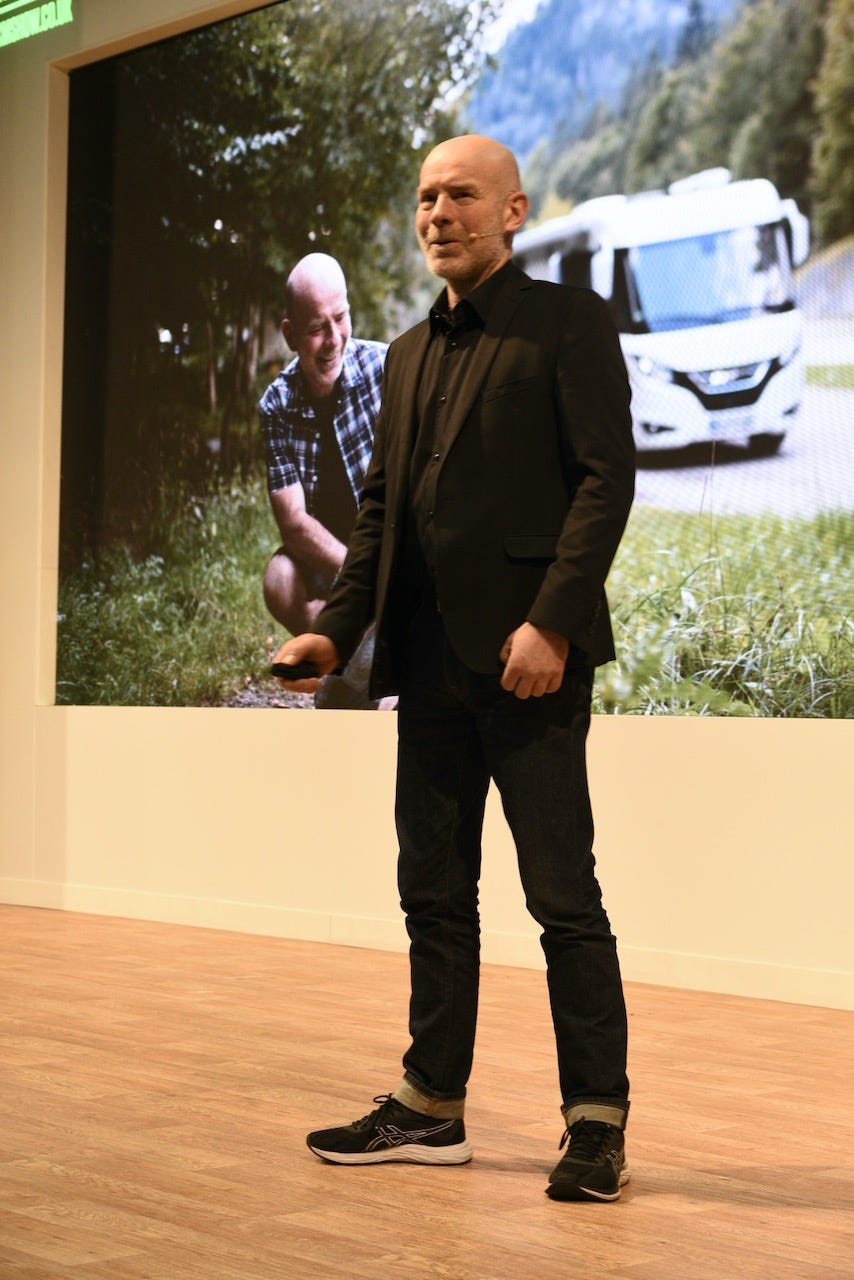
Unfortunately, until governments stop listening to the fuel lobbyists, and public opinion starts to cop on, change will be painfully slow. I think people who have made the change recently and are seeing these issues may go back to an ICE car. It’s frustrating certainly, but for most people, day to day EVs are amazing and we’ll not be going back any time soon! Talking to the caravan dealers at the NEC show, they also seem to have their fingers in their ears about developing smaller lighter weight caravans with EV’s in mind…
We only charge at home. We have a 2011 Nissan Leaf. Here in Australia the charging infrastructure is a lot less developed than the UK. Having watched things develop in the UK, I would say that it will improve but slowly. All the best and love the photos of the dogs on Instagram.